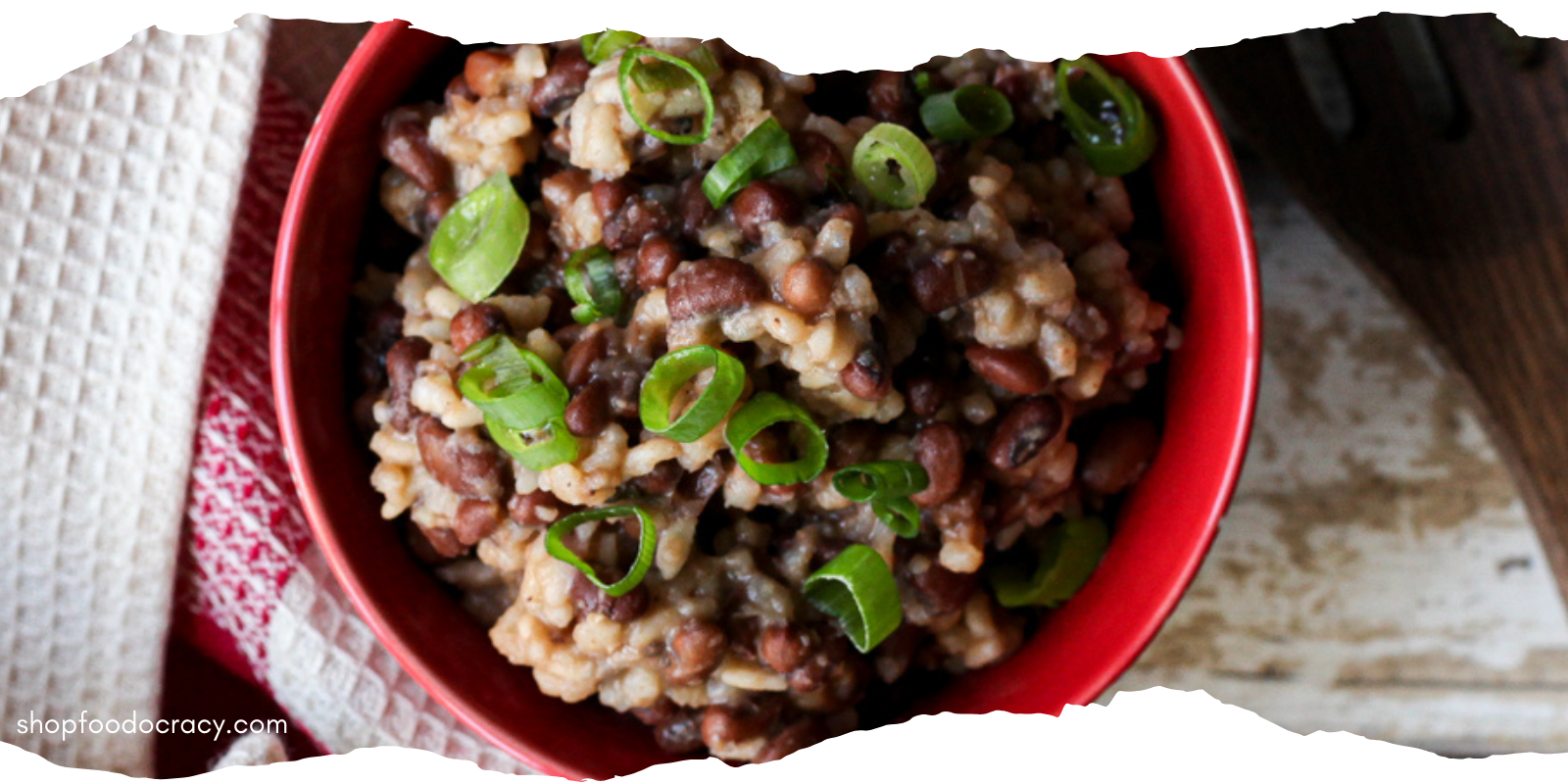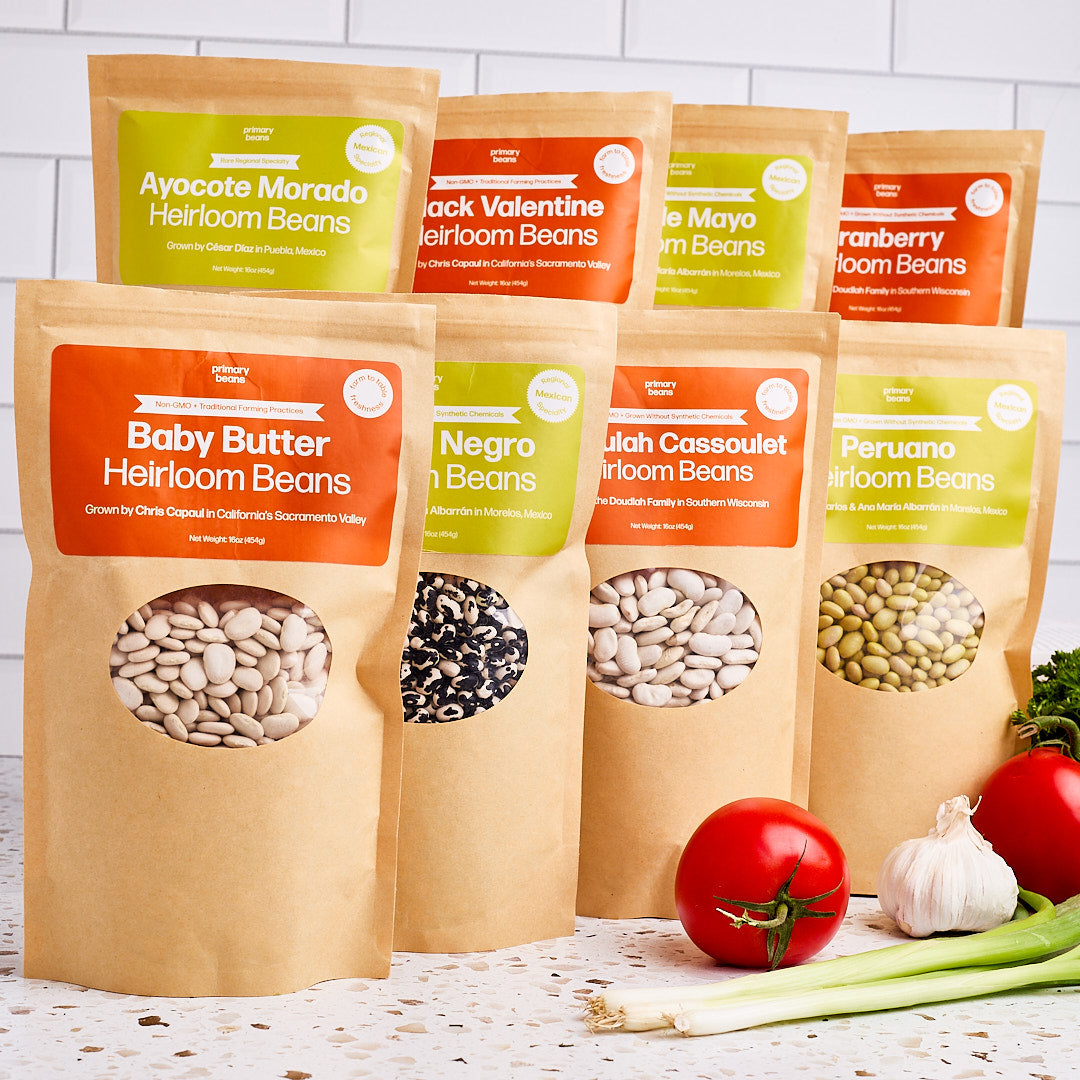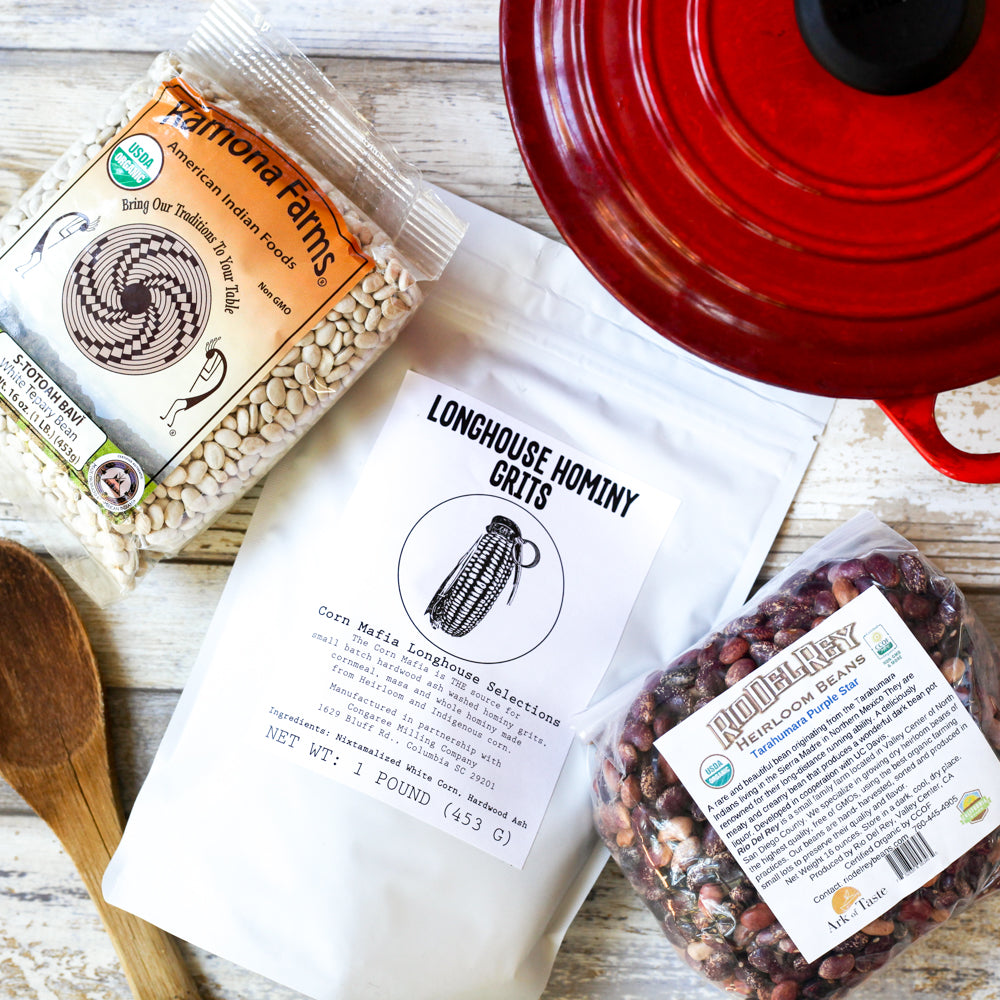10.99 FLAT RATE SHIPPING
10.99 FLAT RATE SHIPPING
SHOP

Rescuing Hoppin' John
December 19, 2023 2 min read
Flavorful and steeped in history, Hoppin' John is a cherished dish within the African diaspora, deeply rooted in the local food systems and Southern foodways of the American South. Originating from West Africa, this dish has transcended time, becoming a New Year's tradition symbolizing luck and prosperity.
Hoppin' John, a quintessential New Year's dish, is celebrated not just for its taste but also for its symbolic significance. Traditionally made with black-eyed peas, rice, and aromatic seasonings, the dish is believed to bring good fortune when enjoyed on New Year's Day. The peas symbolize coins, while the rice represents wealth, creating a dish that reflects the food customs and cultural richness of the African diaspora.

The origins of Hoppin' John are intertwined with the history of the Southern United States, particularly during the era of slavery. Enslaved Africans, during the Middle Passage, were provided limited portions of crops native to Africa to sustain them on slave ships. Once in the Americas, these crops were cultivated on plantations as essential food sources for the enslaved individuals enduring long days of labor. These food traditions, rooted in the African diaspora, found their way into what we now recognize as Southern Cuisine as enslaved Africans cooked for white slave owners.
The Geechie-Gullah people, descendants of enslaved Africans settled in the coastal regions of the Southern United States, play a vital role in Hoppin' John's history. This dish serves as a link to their West African roots, embodying the resilience of a community that maintained its food culture despite the challenges of slavery.
In a broader context,
Every year for New Years we promote the Hoppin' John recipe from Gullah Geechie chef BJ Dennis. (still waiting for our cookbook BJ) Chefs are notorious for not measuring. They cook from intuition, which makes replicating their recipes difficult. I made Hoppin John many times, working from BJs recipe and adjusted it for clarity each time. You will often see rice and the beans cooked separately but that's not how BJ does it and it's not how his ancestors would have cooked. Hoppin John is a one pot, rice and beans dish. It is a technique that is goes back to Africa. Hoppin' John shares resemblances with Ghana's waakye and Senegal's thiebou niebe.
The ingredients that made it really shine had all but died out until not long ago. Bland white rice has taken the place of Carolina Gold Rice and black eyed peas have replaced the much more flavorful Sea Island Red Peas leaving a sad representation of its flavorful ancestor. Sea Island Red Peas and Carolina Gold Rice, the original ingredients of Hoppin' John, were intentionally taken during the Middle Passage, ensuring the survival of the enslaved. Rescued from obscurity, these ingredients contribute to the unique flavors of this beloved dish, connecting us to the food customs and history of the African diaspora.
Recent Articles
About Us
Foodocracy is dedicated to creating a more sustainable and independent food system. We support small, independent farms across the nation.
Get impossible to find beans and grains shipped direct to your doorstep each month from small family farms.
We support small, family owned farms across the nation. Did you know that farmers only make an average of 10 cents on every dollar you spend at the supermarket? Working directly with farms and not middle men ensures that more money goes back to the people actually growning your food.
Get 10% Off
Sign up for delicious recipes and special offers.
**Regularly priced items only.




